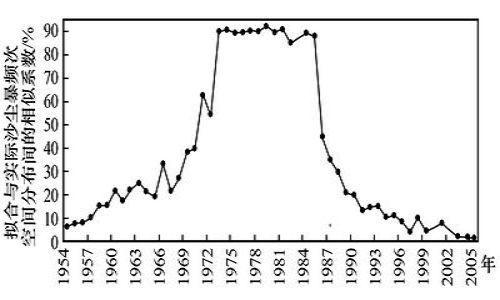Linear Fitting of Multi-Meteorological Factors of Spring Dust Storm Frequency for Northern China
Updatetime:2010-12-06From:
【Enlarge】【Reduce】
Utilizing the normalized data of 18 averaged or accumulated meteorological factors in each spring during 1953-2005, including wind speed, ground temperature (at 5 cm and 40 cm deeps), temperature (including the daily maximum and minimum temperatures), relative humidity, vapor pressure, precipitation (including the daily maximum precipitation and the precipitation continuing for a longest period), numbers of rainy day (including number of rainy days continuing for a longest period), numbers of dry day continuing for a longest period, evaporation, sunshine duration, total and low cloud clusters, the normalized spring dust storm frequencies at 97 observation stations distributed over North and Northwest China have been fitted linearly and empirically, finally showing that, generally, the absolute correlation coefficients between the dust storm frequency and the factors can determine the fitting accuracy. Provided that a fitted frequency lying on the same level as the real one can be regarded as accurate, 33% of the 97 observation stations have a fitting accuracy rate ≥50%, and 39.6% of the years 1953-2005 have an area with fitting accuracy ≥50%. For all the stations and years, about 45.6% of the fitted frequencies lie on the same levels as the real, i.e., about 45.6% of the fitted frequencies are accurate in some sense. The fitted dust storm frequency is generally a little smaller than the real. It can be believed that, wind speed and evaporation are generally positively affecting dust storms in Northern China, but vapor pressure, relative humidity, the minimum temperature affect them negatively. Other affecting dust storms is positively in some places but negatively in other places.
 |
Appendix




